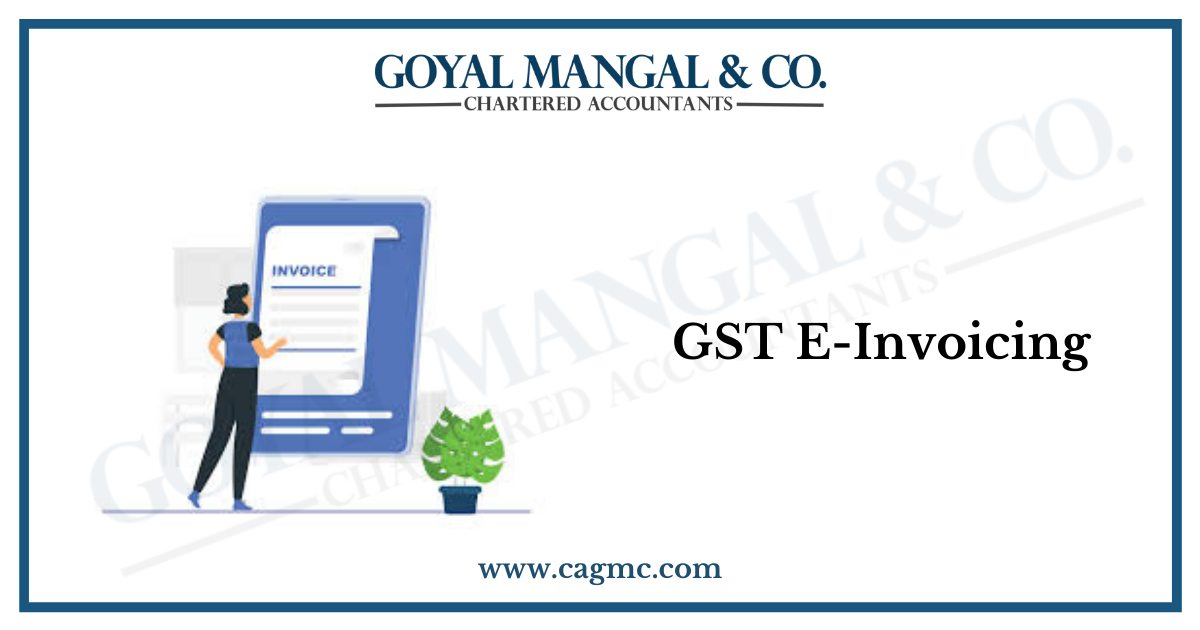| Table of Content |
What is GST E-Invoice System?
GST e-invoice is the introduction of the digital invoice for goods and services provided by the business firm generated at the government GST portal. The concept of GST e-invoice generation system has been taken into consideration for the reduction in GST evasion.
The GST officers have come to a conclusion by providing the businesses with a system through which it will become mandatory for them to generate ‘e-invoice’ for every sale on the government GST portal. This system will only be applicable to those whose turnover threshold is above the determined limit i.e. the government will set a threshold limit for them.

An official said that the businesses that will fall under a certain threshold will be given a unique number whenever an e-invoice will be generated. The businesses can match this number with the invoices which are written in the sales return and paid taxes for verification.
Latest Update: GST e-Invoicing Trial Version Released
The government has finally launched the GST e-invoicing trial version of the popular invoicing mechanism which was earlier discussed in the GST council meeting. The GST e-invoicing will provide multiple categories under which the taxpayer will fill the e-invoice as per the turnover and other criteria. It is required for every taxpayer having turnover more than 500 crores to fill GST e-invoicing through the government portal itself.
Applicability of GST E-Invoice System
It will be mandatory for the businesses to generate the entire GST E-invoice including all the value of sales.
E-Invoicing Under GST Time Period with Business Turnover Conditions
- Turnover 500Crore or More – Voluntary and Trial Basis start from 1st January 2020
- Turnover 100Crore or More – Voluntary and Trial Basis start from 1st February 2020
Note:
- GST e-invoicing is mandatory from 1st April 2020 for the above businesses. Those with turnover up to 100Crore, voluntary and trial basis start from 1st April 2020 as per the sources (Not Declared by the Government).
- With effect from 1st April 2020, a supplier whose aggregate turnover in a financial year exceeds 500crore rupees, to an unregistered person (B2C Invoice), shall have quick response (QR) code.
The official also gave an example in which if Rs 1,000 is the fixed minimum invoice then there are high chances that the businesses can divide the bills so that they can avoid the invoice which will be generated because of the threshold.
Process to Generate GST E-Invoice
The process of generating the GST e-invoice will be the same as the e-way bill which is generated on the https://ewaybill.nic.in/ portal or the GST payments done on the GSTN portal.
The system for generating the GST e-invoice will replace the e-way bill that is being generated for the movements of goods because the generation of invoices will be done by a centralized government portal. At present, the e-way bill is generated only for those moving goods which cost more than Rs 50,000.
The official also added that after the e-tax invoice generation system kicks off then there will be no tension for businesses to file the GST returns because, in the return form, the data will be auto-filled invoice wise.
The official further added “We will have to study global models followed by countries like Latin America, South Korea, and Europe. We will also look at ways to incentivize businesses to adopt the method of e-invoice generation”.
Along with officers committee, the state, central tax officials and GST Network Chief Executive are altogether given the responsibility to introduce the e-invoice under the GST system in order to reduce the invoice generation and compliance burden. The committee is given a deadline for finalising the interim report by next month.
The main aim of the e-invoice generation is to check the GST evasion. After two years of rollout of GST, the government is now aiming towards the anti-evasion measures to increase the revenue as well as the compliance.
From the 1.21crore registered businesses, only 20lakh comes under the composition scheme.
According to a tax expert, the GST E-invoice generation system will reduce the double efforts as well as the manual involvement in the tax returns filing and checking.
It said, “To incentivize businesses to adopt the new system, the tax department could limit the frequency of mandatory departmental audits in case procurements are made on basis of e-invoices”.
New Update for E-invoicing Under GST System
Adding to the enhancement of GST structure, the council has currently made a move to legitimate a new GST E-invoicing or electronic invoicing in a channelized way for reporting business to business (B2B) supplies to GST system. The provision will be in practice from 1 January 2020 on a voluntary basis.
As every new provision calls for fixing a particular standard to practically achieve the goal. The basic standard for e-invoicing is finalized after discussions with trade/industry bodies and members of ICAI to ensure the absolute applicability of the new e-invoicing under GST system. Till now there was no standard fixed for e-invoicing.
The functioning of e-invoicing is directed in such a way that e-invoices generated by one software are operative by software eliminating the need to re-enter the digits for a fresh entry. Adoption of this particular standard will allow the seller, buyer, bank or agent or any other concerned person to read by machine and restrain the unnecessary data hence eliminating errors. This is the key objective behind changing the structure of the e-invoicing GST.
It was in the 37th GST council meeting chaired by Union FM Nirmala Sitharaman, the standard of new e-invoice mechanism was discussed and approved and the same along with the schemes are published on the GST portal







